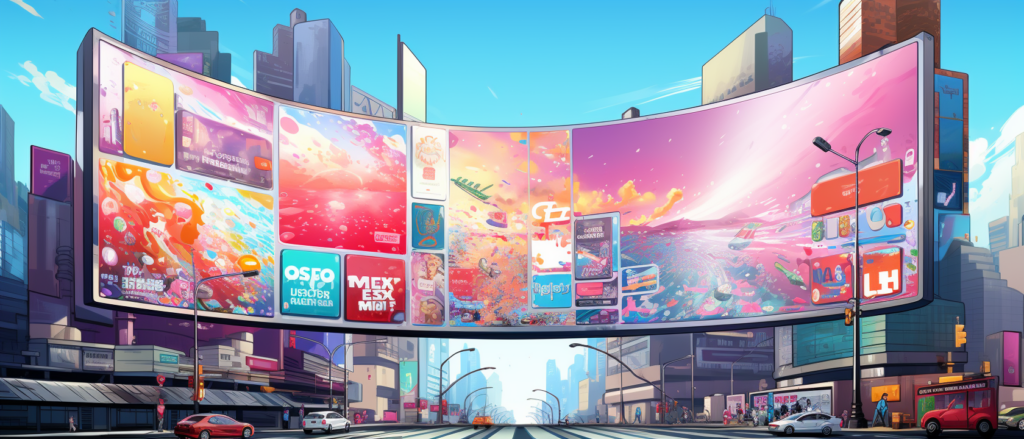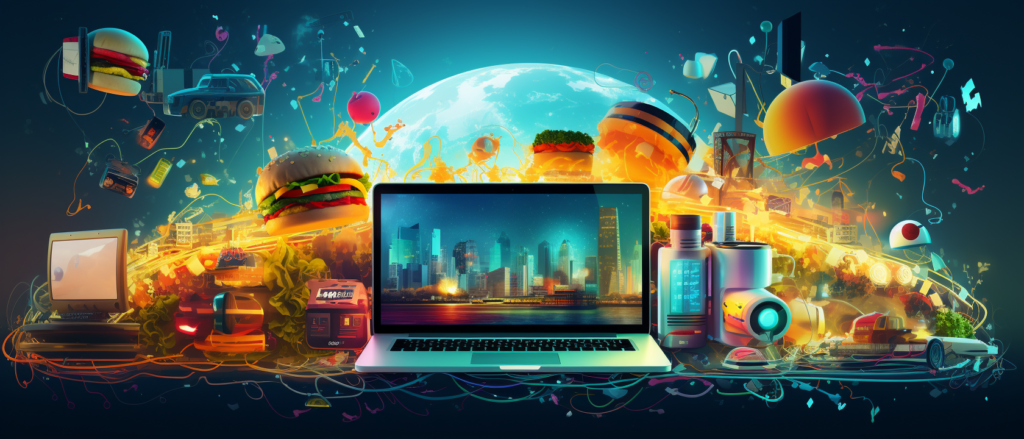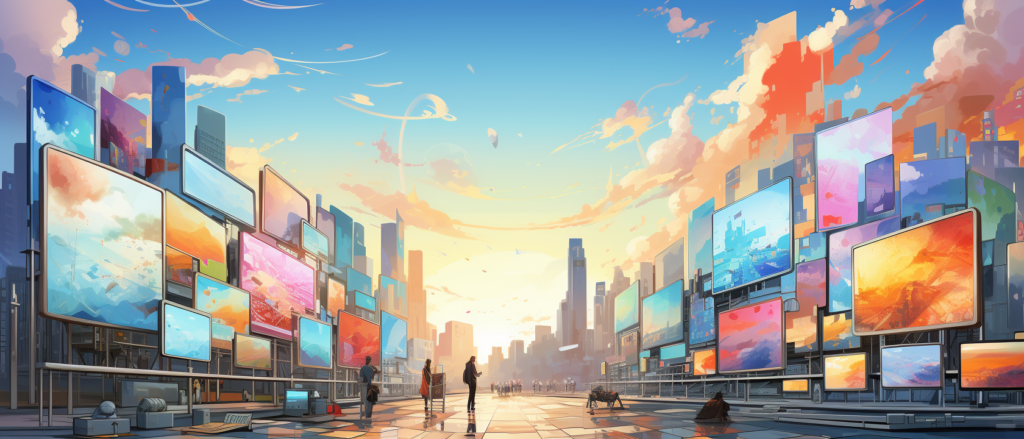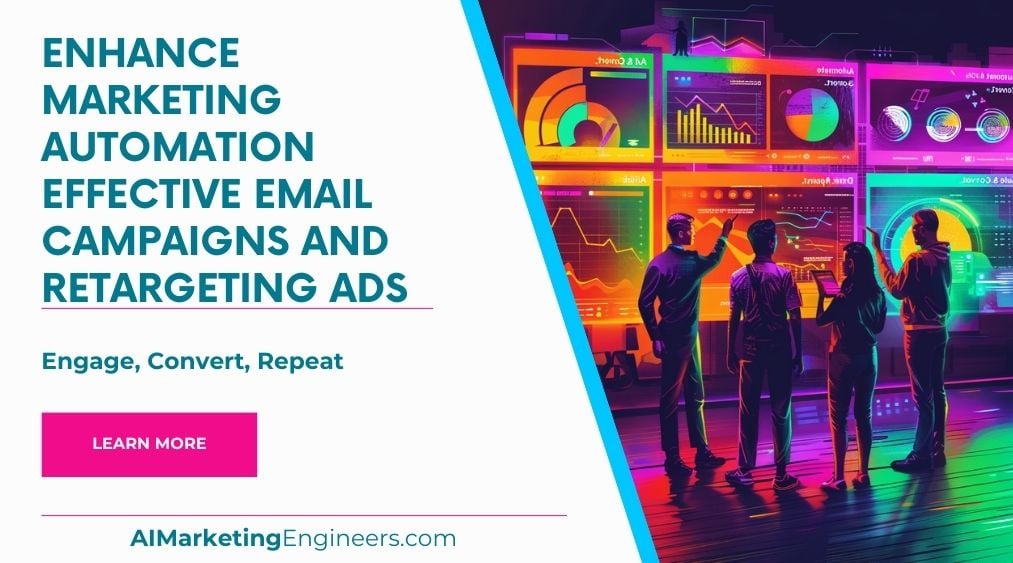Key Takeaways
✅ Digital Dominance: Digital ad spending in the U.S. is projected to reach $271 billion in 2024, accounting for over 60% of total media ad spending. This highlights the growing importance of digital platforms in advertising strategies, necessitating a strong focus on online ad formats and creative assets.
✅ Video Ads Effectiveness: Video ads continue to be highly effective, with 72% of consumers preferring video over text for receiving branded marketing information. Moreover, video ads have been shown to increase purchase intent by 97% and brand association by 139%, making them a powerful tool for advertisers.
✅ Social Media Impact: Social media advertising spending is expected to grow to $118 billion by 2025, reflecting its critical role in modern advertising. With platforms like Facebook, Instagram, and TikTok offering diverse ad formats, including stories, carousel ads, and shoppable posts, brands can create highly engaging and interactive experiences that drive higher engagement and conversion rates.
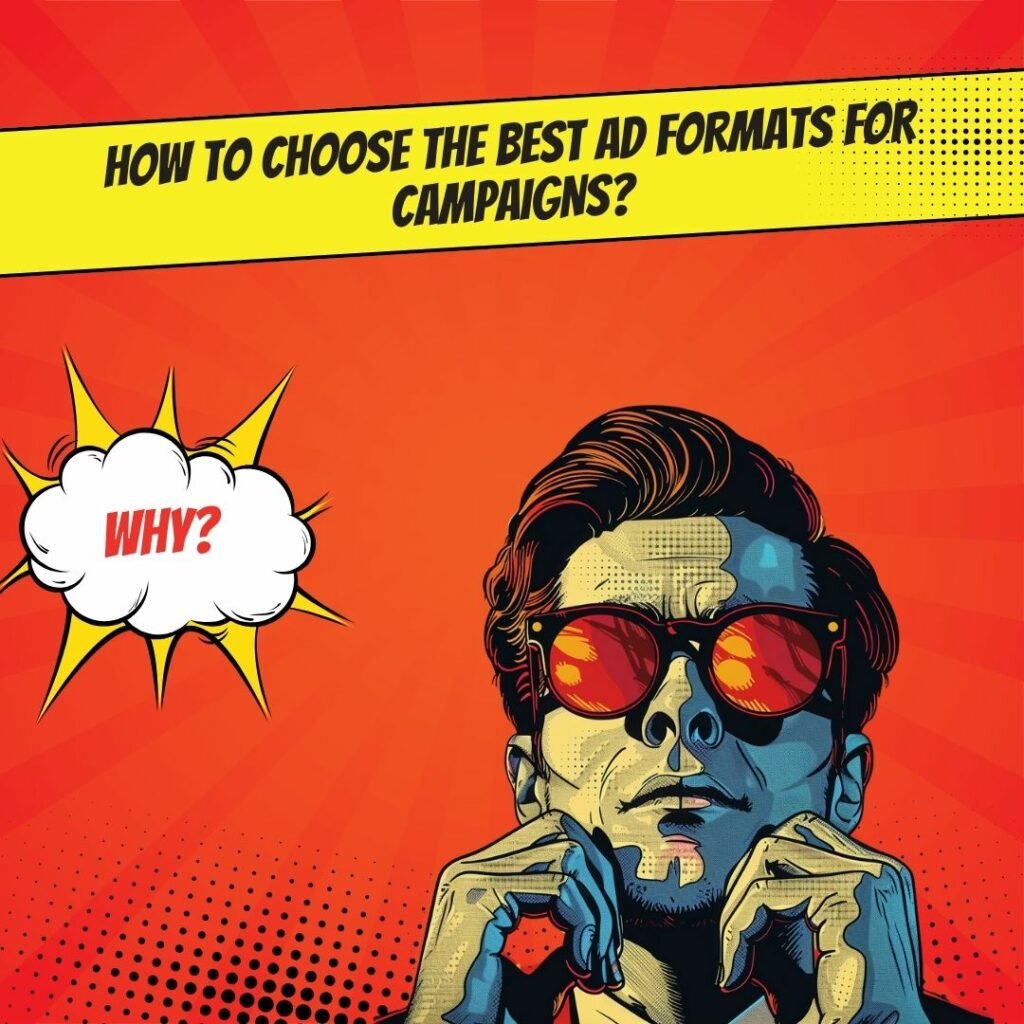
Introduction
In the ever-evolving landscape of advertising, understanding and leveraging various ad formats, creative assets, and media types can be the difference between a campaign's success and its failure. With consumers bombarded by a constant stream of advertisements, it is crucial for marketers to craft engaging and innovative ad experiences that cut through the noise. From traditional formats like TV and radio to the dynamic possibilities offered by digital and social media, the right combination of ad formats and creative assets can significantly enhance brand visibility and audience engagement. This exploration dives into the myriad of options available, shedding light on how to strategically use each to maximize impact and ROI.
As the advertising world becomes more complex, the importance of mastering different media types cannot be overstated. Digital platforms such as social media and programmatic ads offer unprecedented targeting capabilities and real-time analytics, allowing for more personalized and effective campaigns. Meanwhile, traditional media types still hold significant sway, particularly in establishing broad brand awareness. By understanding the strengths and limitations of each media type and how they can complement each other, advertisers can create cohesive, multi-channel strategies that resonate with their target audiences and drive measurable results.
Top Statistics
| Statistic | Insight |
|---|---|
| Video Ad Spending: Expected to grow to $35.62 billion in 2021, up from $31.59 billion in 2020. (Source: eMarketer, 2021) | This growth signifies a continuing trend towards digital video, a crucial area for marketers to tap into to reach audiences effectively. |
| Social Media Ad Spending: Expected to reach $56.14 billion in 2021, accounting for 32.8% of total digital ad spending. (Source: eMarketer, 2021) | Highlighting the dominating presence of social media in digital advertising, this statistic emphasizes the importance of platforms such as Facebook, Instagram, and Twitter. |
| Mobile Ad Spend: Expected to reach $103.35 billion in 2021, accounting for 70.5% of total digital ad spending. (Source: eMarketer, 2021) | Mobile first is not just a buzzword; it’s where the bulk of ad dollars are flowing, reflecting changing consumer behaviors towards mobile usage. |
| Native Ad Spending: Projected to account for 64.8% of all digital display ad spending in 2021. (Source: eMarketer, 2021) | Native advertising continues to blend seamlessly into content, enhancing user experience and effectiveness in target audience engagement. |
Ad Formats: Navigating the Landscape
In the realm of advertising, ad formats are fundamental. These formats, which include display ads, video ads, native ads, search ads, and social media ads, serve as the skeleton to which creative assets cling. Display ads, familiar as banners and pop-ups, are common on most websites and are designed to catch the eye with compelling visuals or animations. Video ads, particularly prevalent on platforms like YouTube, can be subdivided into in-stream (those you see before or during another video) or out-stream (independent video ads appearing in non-video environments). Native ads blend in, mimicking the look and feel of the platform they appear on, offering a less intrusive user experience. Search ads, appearing in search engine results, rely heavily on text and strategic keyword use. Social media ads are tailored specifically to harness the features and user behavior of platforms like Facebook, Instagram, or Twitter.
Creative Assets: More Than Just Eye Candy
At the heart of any advertisement are the creative assets. These assets include images, copy, audio, animation, and interactivity. High-quality images grab attention and communicate a brand's message visually, whereas effective copywriting is key to engaging and persuading potential customers. Audio elements, which encompass everything from catchy jingles to strategic voiceovers, enhance the sensory experience of ads. Animations can make ads more dynamic, drawing the viewer's eye. Finally, interactive elements invite audience participation, potentially increasing engagement with the ad. Intriguingly, the rise of interactive ads highlights advertising's shift towards more engaging, user-centric formats.
Media Types: Choosing the Right Channels
Understanding media types is essential for placing these ads appropriately. The major types include television, radio, print, digital, and out-of-home (OOH) advertising. Television, though traditional, still holds significant clout especially with the advent of streaming ads. Radio ads continue to reach a wide audience, particularly during commute times. Print isn’t dead—it still has a niche market and performs exceptionally well in certain demographics. Digital advertising has grown exponentially and includes anything from website banners to mobile apps and social media platforms. OOH advertising covers billboards, transit ads, and more, often making big impressions in public spaces.
Choosing the Right Combination
Selecting the right combination of ad formats, creative assets, and media types isn't just a matter of mixing and matching; it involves strategic planning and understanding the target audience, budget constraints, and campaign goals. For instance, a campaign aiming for a broad demographic might benefit from combining traditional media like TV with digital strategies to increase reach and engagement. On the other hand, a niche product might require more focused digital ads to engage a specific audience effectively. Successful campaigns often utilize a blend of media types to optimize visibility and impact. For example, a well-coordinated campaign might use catchy video ads on social media to create buzz, reinforced by targeted search ads to capture active interest and intent.
Through these insights, it’s evident that mastering ad formats, creative assets, and media types can significantly enhance the effectiveness of advertising campaigns. Marketers are encouraged to keep experimenting with these variables to find the perfect recipe that resonates with their audience and fulfills their brand’s goals.
AI Marketing Engineers Recommendation
Recommendation 1: Leverage Video Content Across Multiple Platforms: With video traffic projected to make up 82% of all consumer internet traffic by 2022, according to Cisco, integrating high-quality video content into your advertising strategy is essential. Use short-form videos for platforms like TikTok and Instagram to grab attention quickly. Longer formats can be reserved for YouTube or embedded in your website to provide more in-depth information.
Recommendation 2: Emphasize the Use of Interactive Ad Formats to Boost Engagement: Interactive ads, including polls, quizzes, and 360-degree videos, have shown to increase engagement rates significantly. WARC data reveals that interactive ads can boost engagement rates by up to 9 times more than static ads. Incorporating these formats can help maintain consumer interest and increase the time they spend interacting with your content.
Recommendation 3: Implement Programmatic Advertising for Optimized Ad Placement: Utilize programmatic advertising to automate the decision-making process of ad placements using AI and real-time bidding. This approach ensures your ads are shown to the right audience at the optimal time, maximizing efficiency and ROI. Businesses using programmatic advertising see an average of 55% more engagement, as reported by the Data & Marketing Association. Incorporating these platforms enables precision in targeting with less manual effort, making your campaigns more dynamic and responsive to market conditions.
Relevant Links
- Unlock the Secrets to Lucrative Affiliate Marketing in 2020!
- Is the Free or Paid Version of ChatGPT Right for You? Find Out Now!
- Transform Your Marketing Strategy with ChatGPT – Learn How!
- The Cutting-Edge of Tech: How AI Is Revolutionizing Advertising
- Google Ads Revolution: The AI Tool That’s Changing the Game
Conclusion
In the intricate landscape of modern advertising, understanding the varied ad formats, creative assets, and media types is crucial for crafting campaigns that not only capture attention but resonate deeply with audiences. From traditional spaces like television and radio to the dynamic realms of digital and social media, the choice of medium and format can dramatically influence the effectiveness of your advertising efforts.
Indeed, whether it's a compelling video ad that tells a stirring story or a subtle native ad seamlessly integrated into a user's browsing experience, the power of well-chosen creative assets cannot be overstated. High-quality images, engaging copy, immersive audio, and interactive elements are more than just components of an ad; they are the essential tools that, when used wisely, can establish a profound connection with the consumer.
Moreover, the context in which these ads are placed plays a pivotal role. Whether it’s the immediate impact of a billboard in a bustling city or the targeted appeal of a search ad popping up at just the right moment, the medium acts as a bridge between the message and the audience. This selection process, driven by a deep understanding of one's target demographic, budget constraints, and campaign objectives, is what turns a good advertising strategy into a great one.
As we look to the future, the advertising world continues to evolve, demanding a mix of creativity, adaptability, and strategic planning. The successful marketers will be those who not only keep pace with these changes but also anticipate them, embracing innovation while staying trueponce.
FAQs
Question 1: What are the different ad formats used in advertising?
Answer: Ad formats are the diverse ways ads are presented, such as display ads on websites, search ads in search engine results, native ads blending with the content, ads on social media platforms, video ads like on YouTube, and audio ads in podcasts or music platforms.
Question 2: What are creative assets in advertising?
Answer: Creative assets are the building blocks of an ad, including images (photos, illustrations, graphics), videos, copy (text like headlines and calls to action), audio (voiceovers, music, sound effects), and animations (GIFs, motion graphics).
Question 3: What are the different media types used in advertising?
Answer: Media types are the channels for ad delivery: print (magazines, newspapers), broadcast (TV, radio), digital (websites, social media), out-of-home (OOH) like billboards and transit ads, and mobile advertising on smartphones and tablets.
Question 4: How can I create effective ad formats, creative assets, and media types for my advertising campaign?
Answer: To craft effective ads, understand your target audience, continuously test and optimize your strategies, utilize data and analytics for informed decisions, and stay updated with the latest trends in advertising.
Question 5: What are some advanced topics in ad formats, creative assets, and media types?
Answer: Advanced topics include programmatic advertising, personalized ads tailored to individual preferences, interactive ads that engage users, ads using augmented reality (AR) or virtual reality (VR) for immersive experiences, and voice-activated ads through devices like smart speakers.
Academic References
- Percy, L., & Elliott, R. (2019). Advertising Media Planning: A Brand Management Perspective. Routledge. This textbook delivers a comprehensive exploration of advertising media planning, detailing ad formats, creative assets, and media types with a strong focus on understanding target audiences, setting objectives, and the strategic combination of media for effective campaign results.
- Wells, W., Moriarty, S., & Burnett, J. (2016). Advertising Theory. Routledge. Through a theoretical lens, this book delves into the integral role of advertising within society, discussing consumer behavior, brand identity, and creativity in advertising, as well as the effects of new media technologies on advertising strategies.
- Baron, R., & Basile, D. (2017). Media Planning and Buying in the 21st Century. Routledge. Focusing on practical media planning and buying, this resource emphasizes data-driven decisions, digital media's role, and the influence of programmatic advertising, while highlighting challenges and opportunities in emerging technologies like VR and AR.

